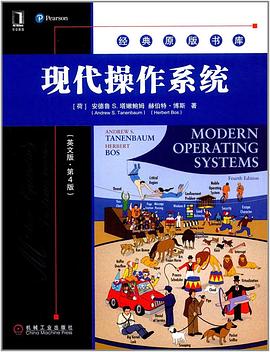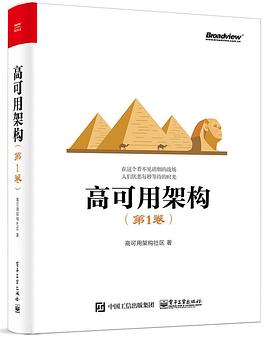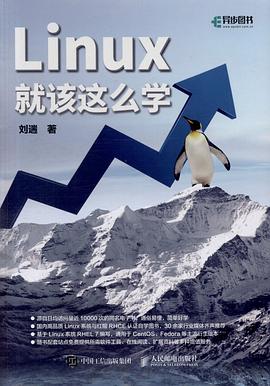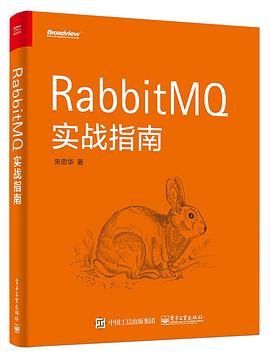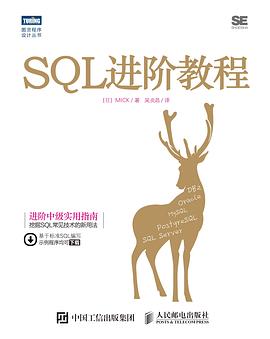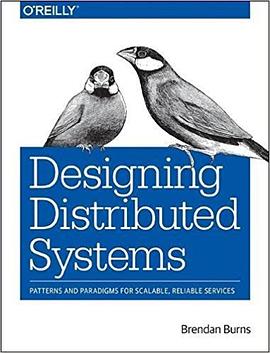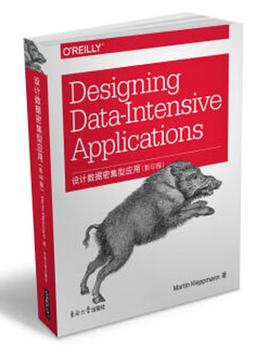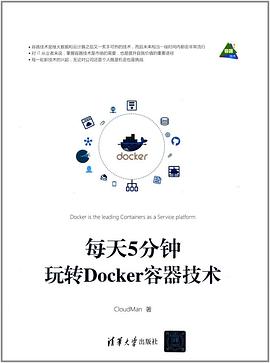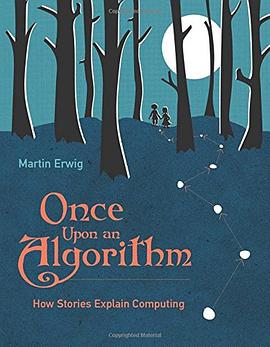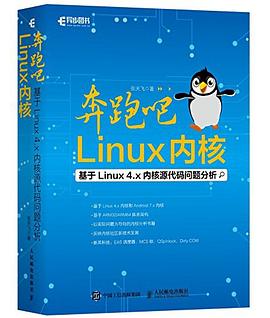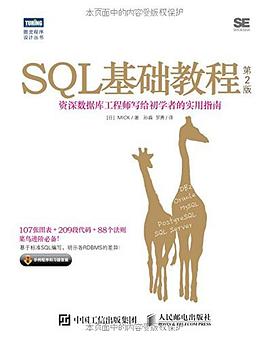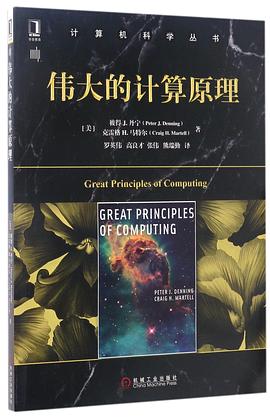目录
1 INTRODUCTION 1
1.1 WHAT IS AN OPERATING SYSTEM 3
1.1.1 The Operating System as an Extended Machine 4
1.1.2 The Operating System as a Resource Manager 5
1.2 HISTORY OF OPERATING SYSTEMS 6
1.2.1 The First Generation (1945–55): Vacuum Tubes 7
1.2.2 The Second Generation (1955–65): Transistors and Batch Systems 8
1.2.3 The Third Generation (1965–1980): ICs and Multiprogramming 9
1.2.4 The Fourth Generation (1980–Present): Personal Computers 14
1.2.5 The Fifth Generation (1990–Present): Mobile Computers 19
1.3 COMPUTER HARDWARE REVIEW 20
1.3.1 Processors 21
1.3.2 Memory 24
1.3.3 Disks 27
1.3.4 I/O Devices 28
1.3.5 Buses 31
1.3.6 Booting the Computer 34
1.4 THE OPERATING SYSTEM ZOO 35
1.4.1 Mainframe Operating Systems 35
1.4.2 Server Operating Systems 35
1.4.3 Multiprocessor Operating Systems 36
1.4.4 Personal Computer Operating Systems 36
1.4.5 Handheld Computer Operating Systems 36
1.4.6 Embedded Operating Systems 36
1.4.7 Sensor—Node Operating Systems 37
1.4.8 Real—Time Operating Systems 37
1.4.9 Smart Card Operating Systems 38
1.5 OPERATING SYSTEM CONCEPTS 38
1.5.1 Processes 39
1.5.2 Address Spaces 41
1.5.3 Files 41
1.5.4 Input/Output 45
1.5.5 Protection 45
1.5.6 The Shell 45
1.5.7 Ontogeny Recapitulates Phylogeny 46
1.6 SYSTEM CALLS 50
1.6.1 System Calls for Process Management 53
1.6.2 System Calls for File Management 56
1.6.3 System Calls for Directory Management 57
1.6.4 Miscellaneous System Calls 59
1.6.5 The Windows Win32 API 60
1.7 OPERATING SYSTEM STRUCTURE 62
1.7.1 Monolithic Systems 62
1.7.2 Layered Systems 63
1.7.3 Microkernels 65
1.7.4 Client—Server Model 68
1.7.5 Virtual Machines 68
1.7.6 Exokernels 72
1.8 THE WORLD ACCORDING TO C 73
1.8.1 The C Language 73
1.8.2 Header Files 74
1.8.3 Large Programming Projects 75
1.8.4 The Model of Run Time 76
1.9 RESEARCH ON OPERATING SYSTEMS 77
1.10 OUTLINE OF THE REST OF THIS BOOK 78
1.11 METRIC UNITS 79
1.12 SUMMARY 80
2 PROCESSES AND THREADS 85
2.1 PROCESSES 85
2.1.1 The Process Model 86
2.1.2 Process Creation 88
2.1.3 Process Termination 90
2.1.4 Process Hierarchies 91
2.1.5 Process States 92
2.1.6 Implementation of Processes 94
2.1.7 Modeling Multiprogramming 95
2.2 THREADS 97
2.2.1 Thread Usage 97
2.2.2 The Classical Thread Model 102
2.2.3 POSIX Threads 106
2.2.4 Implementing Threads in User Space 108
2.2.5 Implementing Threads in the Kernel 111
2.2.6 Hybrid Implementations 112
2.2.7 Scheduler Activations 113
2.2.8 Pop—Up Threads 114
2.2.9 Making Single—Threaded Code Multithreaded 115
2.3 INTERPROCESS COMMUNICATION 119
2.3.1 Race Conditions 119
2.3.2 Critical Regions 121
2.3.3 Mutual Exclusion with Busy Waiting 121
2.3.4 Sleep and Wakeup 127
2.3.5 Semaphores 130
2.3.6 Mutexes 132
2.3.7 Monitors 137
2.3.8 Message Passing 144
2.3.9 Barriers 146
2.3.10 Avoiding Locks: Read—Copy—Update 148
2.4 SCHEDULING 148
2.4.1 Introduction to Scheduling 149
2.4.2 Scheduling in Batch Systems 156
2.4.3 Scheduling in Interactive Systems 158
2.4.4 Scheduling in Real—Time Systems 164
2.4.5 Policy Versus Mechanism 165
2.4.6 Thread Scheduling 165
2.5 CLASSICAL IPC PROBLEMS 167
2.5.1 The Dining Philosophers Problem 167
2.5.2 The Readers and Writers Problem 169
2.6 RESEARCH ON PROCESSES AND THREADS 172
2.7 SUMMARY 173
3 MEMORY MANAGEMENT 181
3.1 NO MEMORY ABSTRACTION 182
3.2 A MEMORY ABSTRACTION: ADDRESS SPACES 185
3.2.1 The Notion of an Address Space 185
3.2.2 Swapping 187
3.2.3 Managing Free Memory 190
3.3 VIRTUAL MEMORY 194
3.3.1 Paging 195
3.3.2 Page Tables 198
3.3.3 Speeding Up Paging 201
3.3.4 Page Tables for Large Memories 205
3.4 PAGE REPLACEMENT ALGORITHMS 209
3.4.1 The Optimal Page Replacement Algorithm 209
3.4.2 The Not Recently Used Page Replacement Algorithm 210
3.4.3 The First—In, First—Out (FIFO) Page Replacement Algorithm 211
3.4.4 The Second—Chance Page Replacement Algorithm 211
3.4.5 The Clock Page Replacement Algorithm 212
3.4.6 The Least Recently Used (LRU) Page Replacement Algorithm 213
3.4.7 Simulating LRU in Software 214
3.4.8 The Working Set Page Replacement Algorithm 215
3.4.9 The WSClock Page Replacement Algorithm 219
3.4.10 Summary of Page Replacement Algorithms 221
3.5 DESIGN ISSUES FOR PAGING SYSTEMS 222
3.5.1 Local versus Global Allocation Policies 222
3.5.2 Load Control 225
3.5.3 Page Size 225
3.5.4 Separate Instruction and Data Spaces 227
3.5.5 Shared Pages 228
3.5.6 Shared Libraries 229
3.5.7 Mapped Files 231
3.5.8 Cleaning Policy 232
3.5.9 Virtual Memory Interface 232
3.6 IMPLEMENTATION ISSUES 233
3.6.1 Operating System Involvement with Paging 233
3.6.2 Page Fault Handling 234
3.6.3 Instruction Backup 235
3.6.4 Locking Pages in Memory 236
3.6.5 Backing Store 237
3.6.6 Separation of Policy and Mechanism 239
3.7 SEGMENTATION 240
3.7.1 Implementation of Pure Segmentation 243
3.7.2 Segmentation with Paging: MULTICS 243
3.7.3 Segmentation with Paging: The Intel x86247
3.8 RESEARCH ON MEMORY MANAGEMENT 252
3.9 SUMMARY 253
4 FILE SYSTEMS 263
4.1 FILES 265
4.1.1 File Naming 265
4.1.2 File Structure 267
4.1.3 File Types 268
4.1.4 File Access 269
4.1.5 File Attributes 271
4.1.6 File Operations 271
4.1.7 An Example Program Using File—System Calls 273
4.2 DIRECTORIES 276
4.2.1 Single—Level Directory Systems 276
4.2.2 Hierarchical Directory Systems 276
4.2.3 Path Names 277
4.2.4 Directory Operations 280
4.3 FILE—SYSTEM IMPLEMENTATION 281
4.3.1 File—System Layout 281
4.3.2 Implementing Files 282
4.3.3 Implementing Directories 287
4.3.4 Shared Files 290
4.3.5 Log—Structured File Systems 293
4.3.6 Journaling File Systems 294
4.3.7 Virtual File Systems 296
4.4 FILE—SYSTEM MANAGEMENT AND OPTIMIZATION 299
4.4.1 Disk—Space Management 299
4.4.2 File—System Backups 306
4.4.3 File—System Consistency 312
4.4.4 File—System Performance 314
4.4.5 Defragmenting Disks 319
4.5 EXAMPLE FILE SYSTEMS 320
4.5.1 The MS—DOS File System 320
4.5.2 The UNIX V7 File System 323
4.5.3 CD—ROM File Systems 325
4.6 RESEARCH ON FILE SYSTEMS 331
4.7 SUMMARY 332
5 INPUT/OUTPUT 337
5.1 PRINCIPLES OF I/O HARDWARE 337
5.1.1 I/O Devices 338
5.1.2 Device Controllers 339
5.1.3 Memory—Mapped I/O 340
5.1.4 Direct Memory Access 344
5.1.5 Interrupts Revisited 347
5.2 PRINCIPLES OF I/O SOFTWARE 351
5.2.1 Goals of the I/O Software 351
5.2.2 Programmed I/O 352
5.2.3 Interrupt—Driven I/O 354
5.2.4 I/O Using DMA 355
5.3 I/O SOFTWARE LAYERS 356
5.3.1 Interrupt Handlers 356
5.3.2 Device Drivers 357
5.3.3 Device—Independent I/O Software 361
5.3.4 User—Space I/O Software 367
5.4 DISKS 369
5.4.1 Disk Hardware 369
5.4.2 Disk Formatting 375
5.4.3 Disk Arm Scheduling Algorithms 379
5.4.4 Error Handling 382
5.4.5 Stable Storage 385
5.5 CLOCKS 388
5.5.1 Clock Hardware 388
5.5.2 Clock Software 389
5.5.3 Soft Timers 392
5.6 USER INTERFACES: KEYBOARD, MOUSE, MONITOR 394
5.6.1 Input Software 394
5.6.2 Output Software 399
5.7 THIN CLIENTS 416
5.8 POWER MANAGEMENT 417
5.8.1 Hardware Issues 418
5.8.2 Operating System Issues 419
5.8.3 Application Program Issues 425
5.9 RESEARCH ON INPUT/OUTPUT 426
5.10 SUMMARY 428
6 DEADLOCKS 435
6.1 RESOURCES 436
6.1.1 Preemptable and Nonpreemptable Resources 436
6.1.2 Resource Acquisition 437
6.2 INTRODUCTION TO DEADLOCKS 438
6.2.1 Conditions for Resource Deadlocks 439
6.2.2 Deadlock Modeling 440
6.3 THE OSTRICH ALGORITHM 443
6.4 DEADLOCK DETECTION AND RECOVERY 443
6.4.1 Deadlock Detection with One Resource of Each Type 444
6.4.2 Deadlock Detection with Multiple Resources of Each Type 446
6.4.3 Recovery from Deadlock 448
6.5 DEADLOCK AVOIDANCE 450
6.5.1 Resource Trajectories 450
6.5.2 Safe and Unsafe States 452
6.5.3 The Banker’s Algorithm for a Single Resource 453
6.5.4 The Banker’s Algorithm for Multiple Resources 454
6.6 DEADLOCK PREVENTION 456
6.6.1 Attacking the Mutual—Exclusion Condition 456
6.6.2 Attacking the Hold—and—Wait Condition 456
6.6.3 Attacking the No—Preemption Condition 457
6.6.4 Attacking the Circular Wait Condition 457
6.7 OTHER ISSUES 458
6.7.1 Two—Phase Locking 458
6.7.2 Communication Deadlocks 459
6.7.3 Livelock 461
6.7.4 Starvation 463
6.8 RESEARCH ON DEADLOCKS 464
6.9 SUMMARY 464
7 VIRTUALIZATION AND THE CLOUD 471
7.1 HISTORY 473
7.2 REQUIREMENTS FOR VIRTUALIZATION 474
7.3 TYPE 1 AND TYPE 2 HYPERVISORS 477
7.4 TECHNIQUES FOR EFFICIENT VIRTUALIZATION 478
7.4.1 Virtualizing the Unvirtualizable 479
7.4.2 The Cost of Virtualization 482
7.5 ARE HYPERVISORS MICROKERNELS DONE RIGHT 483
7.6 MEMORY VIRTUALIZATION 486
7.7 I/O VIRTUALIZATION 490
7.8 VIRTUAL APPLIANCES 493
7.9 VIRTUAL MACHINES ON MULTICORE CPUS 494
7.10 LICENSING ISSUES 494
7.11 CLOUDS 495
7.11.1 Clouds as a Service 496
7.11.2 Virtual Machine Migration 496
7.11.3 Checkpointing 497
7.12 CASE STUDY: VMWARE 498
7.12.1 The Early History of VMware 498
7.12.2 VMware Workstation 499
7.12.3 Challenges in Bringing Virtualization to the x86500
7.12.4 VMware Workstation: Solution Overview 502
7.12.5 The Evolution of VMware Workstation 511
7.12.6 ESX Server: VMware’s type 1 Hypervisor 512
7.13 RESEARCH ON VIRTUALIZATION AND THE CLOUD 514
8 MULTIPLE PROCESSOR SYSTEMS 517
8.1 MULTIPROCESSORS 520
8.1.1 Multiprocessor Hardware 520
8.1.2 Multiprocessor Operating System Types 530
8.1.3 Multiprocessor Synchronization 534
8.1.4 Multiprocessor Scheduling 539
8.2 MULTICOMPUTERS 544
8.2.1 Multicomputer Hardware 545
8.2.2 Low—Level Communication Software 550
8.2.3 User—Level Communication Software 552
8.2.4 Remote Procedure Call 556
8.2.5 Distributed Shared Memory 558
8.2.6 Multicomputer Scheduling 563
8.2.7 Load Balancing 563
8.3 DISTRIBUTED SYSTEMS 566
8.3.1 Network Hardware 568
8.3.2 Network Services and Protocols 571
8.3.3 Document—Based Middleware 576
8.3.4 File—System—Based Middleware 577
8.3.5 Object—Based Middleware 582
8.3.6 Coordination—Based Middleware 584
8.4 RESEARCH ON MULTIPLE PROCESSOR SYSTEMS 587
8.5 SUMMARY 588
9 SECURITY 593
9.1 THE SECURITY ENVIRONMENT 595
9.1.1 Threats 596
9.1.2 Attackers 598
9.2 OPERATING SYSTEMS SECURITY 599
9.2.1 Can We Build Secure Systems 600
9.2.2 Trusted Computing Base 601
9.3 CONTROLLING ACCESS TO RESOURCES 602
9.3.1 Protection Domains 602
9.3.2 Access Control Lists 605
9.3.3 Capabilities 608
9.4 FORMAL MODELS OF SECURE SYSTEMS 611
9.4.1 Multilevel Security 612
9.4.2 Covert Channels 615
9.5 BASICS OF CRYPTOGRAPHY 619
9.5.1 Secret—Key Cryptography 620
9.5.2 Public—Key Cryptography 621
9.5.3 One—Way Functions 622
9.5.4 Digital Signatures 622
9.5.5 Trusted Platform Modules 624
9.6 AUTHENTICATION 626
9.6.1 Authentication Using a Physical Object 633
9.6.2 Authentication Using Biometrics 636
9.7 EXPLOITING SOFTWARE 639
9.7.1 Buffer Overflow Attacks 640
9.7.2 Format String Attacks 649
9.7.3 Dangling Pointers 652
9.7.4 Null Pointer Dereference Attacks 653
9.7.5 Integer Overflow Attacks 654
9.7.6 Command Injection Attacks 655
9.7.7 Time of Check to Time of Use Attacks 656
9.8 INSIDER ATTACKS 657
9.8.1 Logic Bombs 657
9.8.2 Back Doors 658
9.8.3 Login Spoofing 659
9.9 MALWARE 660
9.9.1 Trojan Horses 662
9.9.2 Viruses 664
9.9.3 Worms 674
9.9.4 Spyware 676
9.9.5 Rootkits 680
9.10 DEFENSES 684
9.10.1 Firewalls 685
9.10.2 Antivirus and Anti—Antivirus Techniques 687
9.10.3 Code Signing 693
9.10.4 Jailing 694
9.10.5 Model—Based Intrusion Detection 695
9.10.6 Encapsulating Mobile Code 697
9.10.7 Java Security 701
9.11 RESEARCH ON SECURITY 703
9.12 SUMMARY 704
10 CASE STUDY 1: UNIX, LINUX, AND ANDROID 713
10.1 HISTORY OF UNIX AND LINUX 714
10.1.1 UNICS 714
10.1.2 PDP—11 UNIX 715
10.1.3 Portable UNIX 716
10.1.4 Berkeley UNIX 717
10.1.5 Standard UNIX 718
10.1.6 MINIX 719
10.1.7 Linux 720
10.2 OVERVIEW OF LINUX 723
10.2.1 Linux Goals 723
10.2.2 Interfaces to Linux 724
10.2.3 The Shell 725
10.2.4 Linux Utility Programs 728
10.2.5 Kernel Structure 730
10.3 PROCESSES IN LINUX 733
10.3.1 Fundamental Concepts 733
10.3.2 Process—Management System Calls in Linux 735
10.3.3 Implementation of Processes and Threads in Linux 739
10.3.4 Scheduling in Linux 746
10.3.5 Booting Linux 751
10.4 MEMORY MANAGEMENT IN LINUX 753
10.4.1 Fundamental Concepts 753
10.4.2 Memory Management System Calls in Linux 756
10.4.3 Implementation of Memory Management in Linux 758
10.4.4 Paging in Linux 764
10.5 INPUT/OUTPUT IN LINUX 767
10.5.1 Fundamental Concepts 767
10.5.2 Networking 769
10.5.3 Input/Output System Calls in Linux 770
10.5.4 Implementation of Input/Output in Linux 771
10.5.5 Modules in Linux 774
10.6 THE LINUX FILE SYSTEM 775
10.6.1 Fundamental Concepts 775
10.6.2 File—System Calls in Linux 780
10.6.3 Implementation of the Linux File System 783
10.6.4 NFS: The Network File System 792
10.7 SECURITY IN LINUX 798
10.7.1 Fundamental Concepts 798
10.7.2 Security System Calls in Linux 800
10.7.3 Implementation of Security in Linux 801
10.8 ANDROID 802
10.8.1 Android and Google 803
10.8.2 History of Android 803
10.8.3 Design Goals 807
10.8.4 Android Architecture 809
10.8.5 Linux Extensions 810
10.8.6 Dalvik 814
10.8.7 Binder IPC 815
10.8.8 Android Applications 824
10.8.9 Intents 836
10.8.10 Application Sandboxes 837
10.8.11 Security 838
10.8.12 Process Model 844
10.9 SUMMARY 848
11 CASE STUDY 2: WINDOWS 8
11.1 HISTORY OF WINDOWS THROUGH WINDOWS 8.1857
11.1.11980s: MS—DOS 857
11.1.21990s: MS—DOS—based Windows 859
11.1.32000s: NT—based Windows 859
11.1.4 Windows Vista 862
11.1.52010s: Modern Windows 863
11.2 PROGRAMMING WINDOWS 864
11.2.1 The Native NT Application Programming Interface 867
11.2.2 The Win32 Application Programming Interface 871
11.2.3 The Windows Registry 875
11.3 SYSTEM STRUCTURE 877
11.3.1 Operating System Structure 877
11.3.2 Booting Windows 893
11.3.3 Implementation of the Object Manager 894
11.3.4 Subsystems, DLLs, and User—Mode Services 905
11.4 PROCESSES AND THREADS IN WINDOWS 908
11.4.1 Fundamental Concepts 908
11.4.2 Job, Process, Thread, and Fiber Management API Calls 914
11.4.3 Implementation of Processes and Threads 919
11.5 MEMORY MANAGEMENT 927
11.5.1 Fundamental Concepts 927
11.5.2 Memory—Management System Calls 931
11.5.3 Implementation of Memory Management 932
11.6 CACHING IN WINDOWS 942
11.7 INPUT/OUTPUT IN WINDOWS 943
11.7.1 Fundamental Concepts 944
11.7.2 Input/Output API Calls 945
11.7.3 Implementation of I/O 948
11.8 THE WINDOWS NT FILE SYSTEM 952
11.8.1 Fundamental Concepts 953
11.8.2 Implementation of the NT File System 954
11.9 WINDOWS POWER MANAGEMENT 964
11.10 SECURITY IN WINDOWS 8966
11.10.1 Fundamental Concepts 967
11.10.2 Security API Calls 969
11.10.3 Implementation of Security 970
11.10.4 Security Mitigations 972
11.11 SUMMARY 975
12 OPERATING SYSTEM DESIGN 981
12.1 THE NATURE OF THE DESIGN PROBLEM 982
12.1.1 Goals 982
12.1.2 Why Is It Hard to Design an Operating System 983
12.2 INTERFACE DESIGN 985
12.2.1 Guiding Principles 985
12.2.2 Paradigms 987
12.2.3 The System—Call Interface 991
12.3 IMPLEMENTATION 993
12.3.1 System Structure 993
12.3.2 Mechanism vs.Policy 997
12.3.3 Orthogonality 998
12.3.4 Naming 999
12.3.5 Binding Time 1001
12.3.6 Static vs.Dynamic Structures 1001
12.3.7 Top—Down vs.Bottom—Up Implementation 1003
12.3.8 Synchronous vs.Asynchronous Communication 1004
12.3.9 Useful Techniques 1005
12.4 PERFORMANCE 1010
12.4.1 Why Are Operating Systems Slow 1010
12.4.2 What Should Be Optimized 1011
12.4.3 Space—Time Trade—offs 1012
12.4.4 Caching 1015
12.4.5 Hints 1016
12.4.6 Exploiting Locality 1016
12.4.7 Optimize the Common Case 1017
12.5 PROJECT MANAGEMENT 1018
12.5.1 The Mythical Man Month 1018
12.5.2 Team Structure 1019
12.5.3 The Role of Experience 1021
12.5.4 No Silver Bullet 1021
12.6 TRENDS IN OPERATING SYSTEM DESIGN 1022
12.6.1 Virtualization and the Cloud 1023
12.6.2 Manycore Chips 1023
12.6.3 Large—Address—Space Operating Systems 1024
12.6.4 Seamless Data Access 1025
12.6.5 Battery—Powered Computers 1025
12.6.6 Embedded Systems 1026
12.7 SUMMARY 1027
13 READING LIST AND BIBLIOGRAPHY 1031
13.1 SUGGESTIONS FOR FURTHER READING 1031
13.1.1 Introduction 1031
13.1.2 Processes and Threads 1032
13.1.3 Memory Management 1033
13.1.4 File Systems 1033
13.1.5 Input/Output 1034
13.1.6 Deadlocks 1035
13.1.7 Virtualization and the Cloud 1035
13.1.8 Multiple Processor Systems 1036
13.1.9 Security 1037
13.1.10 Case Study 1: UNIX, Linux, and Android 1039
13.1.11 Case Study 2: Windows 81040
13.1.12 Operating System Design 1040
13.2 ALPHABETICAL BIBLIOGRAPHY 1041
INDEX 1071
· · · · · · (
收起)
